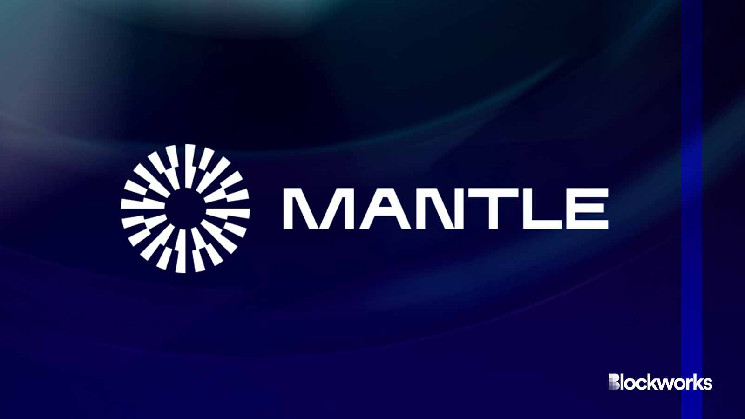After nine months in development, Ethereum layer-2 network Mantle has launched its second core product, Mantle Liquid Staking Protocol (LSP).
This new protocol, deployed on Mantle and Ethereum mainnet, introduces a non-custodial and permissionless ether liquid staking solution, Mantle Staked Ether (mETH).
METH acts as a value-accumulating receipt token within the Mantle LSP, very similar to Lido’s staked ether (stETH). Mantle aims to achieve the highest sustainable core yield by exploring maximal extractable value. It also shares yield from the Mantle treasury, according to a statement released Monday.
The idea for mETH came from Mantle “alchemist” Jordi Alexander, chief information officer at Selini Capital.
“We’ve just created a lighter weight, more modern Lido,” Alexander told Blockworks. He champions the idea of offering a native staking yield on an Ethereum layer-2. The premise is “we should do all of DeFi, but first start by having the 5% yield,” he explained.
This is the same promise of the planned Blast layer-2, which has attracted deposits of ether (ETH) and stablecoins now topping $750 million over the past two weeks.
Blast, despite its rapid growth and ambitious plans, faces scrutiny over its security model and the centralization concerns related to its reliance on Lido.
Read more: Did Lido fly too close to the sun? Inside the centralization debate
“Kudos to the Blast team because it’s the same idea that I had but just a very different implementation,” said Alexander, who has been advising Mantle since March and serves on investment and treasury committees.
“I was pretty excited [when Blast launched] because they’re educating the market on this idea” of having native staking yield available for DeFi on a layer-2, he said.
The Mantle LSP development process represents a more traditional, structured approach with a focus on security and integration within its ecosystem.
The team decided to build a solution from scratch, but also talked to Lido about the idea of white labeling their infrastructure.
“We talked to everybody — we literally went through every single [liquid staking team] out there — including Lido of course — we had multiple chats with them to decide [if] there [is] a way that we can take the easy way out,” Alexander said, adding “we decided to go the hard route, and it’s taken many months to do it properly and get all the audits and everything.”
The various components of the Mantle LSP have been audited by Hexens, MixBytes, Secure3 and Verilog, and the contract upgradeability is the responsibility of the Mantle Security Council, a 6 of 12 multisig, which is also used for maintenance of the Mantle Network itself.
“If you trust Mantle, it’s the same security,” Alexander said.
Unlike Blast, Mantle LSP doesn’t force anyone to stake or bridge. METH will work just fine on Ethereum mainnet and Alexander stressed that it is an independent product from the Mantle Network.
“There’s some people that just want to stay on [Ethereum] mainnet and we do want to cater to them as well,” but, he adds, “I expect that most of it eventually will get incentivized to move because we’ll make it really juicy to ship it over.”
These incentives can be seen as a vampire attack on Lido, which Alexander says should appeal to members of the Ethereum community concerned over excessive Lido centralization.
What’s cooking in “the mETH lab”?
The Mantle team has a number of ideas in the works to expand upon the LSP’s use within its network, which will be proposed to holders of the MNT governance token in the coming weeks.
MNT is also used to pay transaction fees on the Mantle Network.
Alexander originally considered mETH as a good candidate for the Mantle gas token — “like a self-replenishing gas,” he said — but ultimately Mantle’s mainnet launch schedule led to the introduction of MNT.
The team might consider a dual gas token model, make use of account abstraction to reduce user friction, or outline other new utilities for MNT.
“I think we’re going to have it be sort of like ATOM where you get airdrops and it’s kind of like a launch pool token,” Alexander said, referring to the native asset of the Cosmos Hub.
He agrees with the critique that Ethereum has too many layer-2 networks proliferating, suggesting that most lack a creative new idea.
“Is there something unique or some imagination that’s gone into it instead of just deploying a tenth version of Aave and just doing the same USDT pair or whatever?” he asked rhetorically.
And as for the name and its natural association with illicit drugs?
“We’re going to try to just lean into it. I’m going to launch an unofficial meme contest on my Twitter.”
 blockworks.co
blockworks.co
